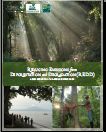New Casebook of On-the-Ground REDD Project Experience
-----------------
Read at : Forest Policy Info Mailing List <forests-l@lists.iisd.ca>
New Casebook of On-the-Ground REDD Project Experience
The Nature Conservancy, Conservation International and Wildlife Conservation Society are pleased to share with you a new publication entitled Reducing Emissions from Deforestation and Degradation (REDD): A Casebook of On-the-Ground Experience, which we hope you will find of interest. The full report is available electronically at: http://conserveonline.org/workspaces/redd/documents/redd-a-casebook-of-on-the-ground-experience
Today, there is widespread consensus that we cannot solve the climate change crisis without addressing deforestation. Yet, there are on-going attempts to cast doubt on whether forest carbon can be a credible part of the climate solution, and a debate is in full swing about the inclusion of forests in U.S. and international climate policy. Against this backdrop, we felt it was important to document and share our experience. To that end, we set out several months ago to painstakingly synthesize over a decade of history and thousands of pages of technical documents into the attached 70-page casebook on a selection of our REDD efforts.
For a combined 38 years, The Nature Conservancy, Conservation International and Wildlife Conservation Society have been leaders in piloting 17 on-the-ground REDD demonstration projects. Through these projects, we have helped pioneer and further the state of knowledge of forest carbon measurement, carbon accounting methodologies, conservation strategies, and community involvement approaches.
This casebook draws on four specific experiences in Bolivia, Madagascar, and Indonesia. The report examines the principal aspects of demonstrating REDD credibility (e.g., baselines and additionality, measuring and monitoring, leakage, impermanence, etc.). For each issue, a project is examined in depth, describing how the challenges were dealt with and lessons learned for the future. The bottom line is simple: These projects demonstrate that REDD can produce credible carbon benefits, often with positive effects on local people and biodiversity.
As the discussions continue about whether and how to structure climate policy and financial investments to address emissions from forests, there is much to learn from on-the-ground activities. We hope that you find our experiences both interesting and informative.
Sincerely,
E Please consider the environment before printing this email
Nicole R. Virgilio
Forest Carbon Specialist,
Forest Carbon Development Team -
Global Climate Change Team
nature.org
|
---------------


